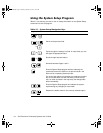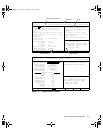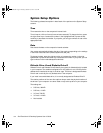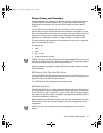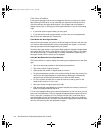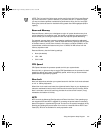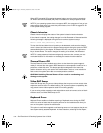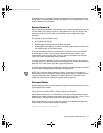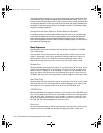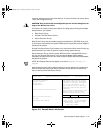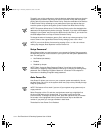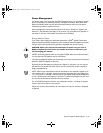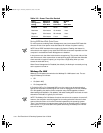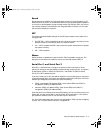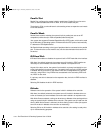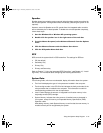
3-12
'HOO3UHFLVLRQ'HVNWRS6\VWHPV8VHU©V*XLGH
To provide maximum security for your system, operate the system with System Pass-
word Enabled, Setup Password Enabled, and Password Status Locked. Then, if you
want to let selected individuals use your system, give them the system password
but
not the setup password
. In this way, even those who know the system password can-
not disable it at system start-up and will not be able to unlock it in the System Setup
program to change or disable it.
8VLQJ3DVVZRUG6WDWXV:LWKRXWD6\VWHP3DVVZRUG(QDEOHG
In situations where the network administrator does not want to use a system pass-
word, Password Status can be used to guard against a user assigning a password.
With Password Status Locked and Setup Password Enabled, a user who does not
know the setup password cannot enter the System Setup program to unlock the sys-
tem password and assign one.
%RRW6HTXHQFH
Boot Sequence
can be set to Diskette First (the default), Hard Disk Only, CD-ROM
First, or Device List.
The term
boot
refers to the system’s start-up procedure. When turned on, the
system “bootstraps” itself into an operational state by loading into memory a
small program, which in turn loads the necessary operating system. Boot
Sequence
tells the system where to look for the files that it needs to load.
'LVNHWWH)LUVW
Selecting Diskette First causes the system to try booting from drive A first. If the
system finds a diskette that is not bootable in the drive or finds a problem with
the drive itself, it displays an error message. If it does not find a diskette in the
drive, the system tries to boot from the hard-disk drive (drive 0), then from the
CD-ROM, and finally from the Plug and Play network adapters in the order found.
+DUG'LVN2QO\
Selecting Hard Disk Only
causes the system to attempt to boot first from the hard-
disk drive and then from the Plug and Play network adapters in the order found.
The system will not attempt to boot from drive A or the CD-ROM drive.
&'520)LUVW
Selecting CD-ROM First causes the system to try booting from the CD-ROM drive
first. If the system finds a CD that is not bootable in the drive or finds a problem
with the drive itself, it displays an error message. If it does not find a CD in the
drive, the system tries to boot from drive A, then from drive C, and finally from
the Plug and Play network adapters in the order found.
'HYLFH/LVW
Device List provides access to the Device List screen (see Figure 3-2), where you can
choose from a list of available boot devices and specify the order in which your
23186bk0.bk Page 12 Thursday, October 29, 1998 11:07 AM



